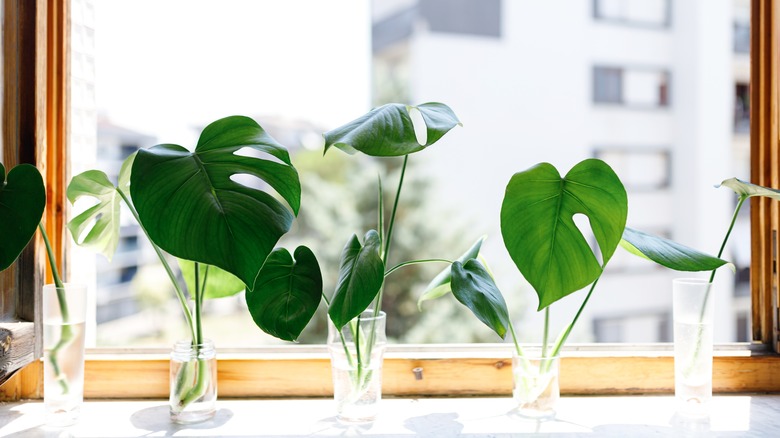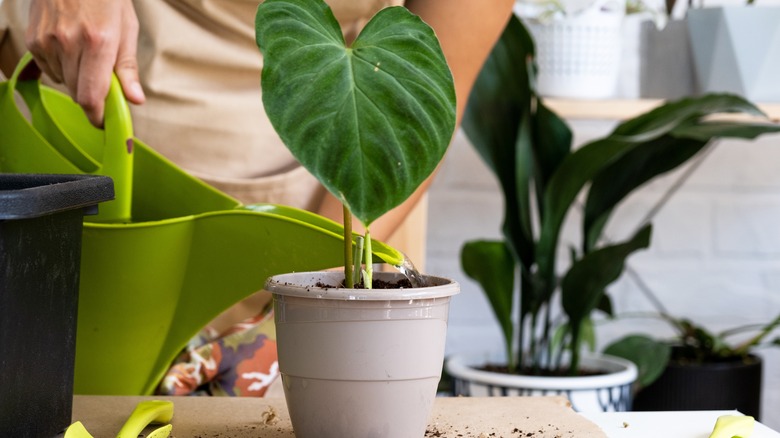How To Easily Transfer Water Propagated Philodendron Plants To Soil
Water propagation is a popular way of growing new plants. By taking cuttings from a mother plant, you can grow new roots from the nodes and replant them in pots of their own. Propagating philodendrons like monsteras or trailing heart-leaf philodendrons is easy. All you have to do is divide the stem by cutting in between nodes so each cutting has at least one node and a leaf. Then, pop the cuttings into a container of water. Regularly change the water to keep it fresh, and you'll start to see root growth in about three weeks.
It's exciting to propagate plants in water because you get to watch the root growth through a glass jar, which also makes it easier to know when the cutting is ready to plant into some soil – a couple of inches worth of roots means the cutting is strong enough for planting. Transferring a water-propagated philodendron plant to soil might feel a bit daunting. You're dramatically changing the growing environment, which could shock the new roots. So, it's important to do it correctly. Keep reading to find out exactly how to transfer cuttings from water to soil successfully.
How to plant water propagated cuttings into soil
Prepare your tools and materials for the transfer before you start. You will need two to three well-rooted cuttings per pot, pots with good drainage, a small shovel or spoon, and well-draining soil — half compost and half perlite works well. Set aside some water for later, making sure it's the same kind of water that your cuttings are used to. When using tap water, it's a good idea to let it sit out for 24 hours before using it to water your plants, so the chlorine can evaporate. You could also use filtered, bottled, or rainwater.
Before planting, make sure that each cutting has at least 2 inches of roots. Fill the pots halfway with the well-draining soil. This will allow enough support for the stems to stand upright when planted and enough space beneath for the roots to grow and anchor the philodendron more firmly as it gets bigger. Hold the cuttings in the pot while you fill the space around them with soil. Pat the soil down gently around the stems to help provide further stability for them to stand up on their own, but don't pack the soil down too much to restrict airflow. Finally, water your plants thoroughly.
How to avoid transplant shock for water propagated cuttings
It's important to gradually adjust your philodendrons to their new, drier growing environment. This is because roots that grow in water develop differently from those grown in soil. They are smaller and more fragile as they have no trouble finding and retaining water when they live in it. Transferring them straight over to a dry environment, like soil, can be a big shock to their roots, and the plant may not survive.
Normally, you'd wait for your plant's soil to dry out between waterings, but the roots of water-propagated cuttings benefit from regular watering until the plant is established in the soil, and its roots have become sturdier. It's necessary to keep the soil moist for the first few weeks until the plant adjusts to its new environment. Then, you can start to reduce the amount of water.
When watering for the first time, make sure your pots have a drainage tray and slowly water them from the top of the plant — saturating all areas of the soil with water until you see it start to seep out the bottom of the pot. By watering slowly, you'll ensure that the water doesn't just drain straight through to the bottom via the edges where there might be gaps. Finally, empty the water to prevent root rot.

